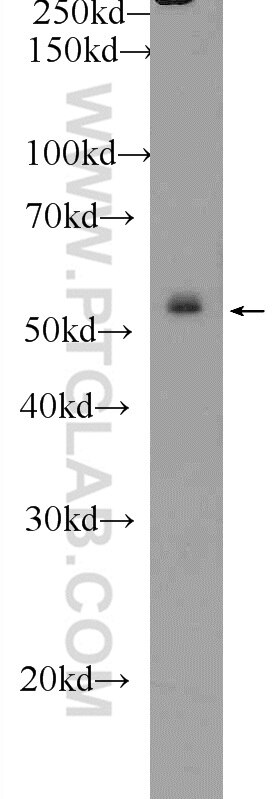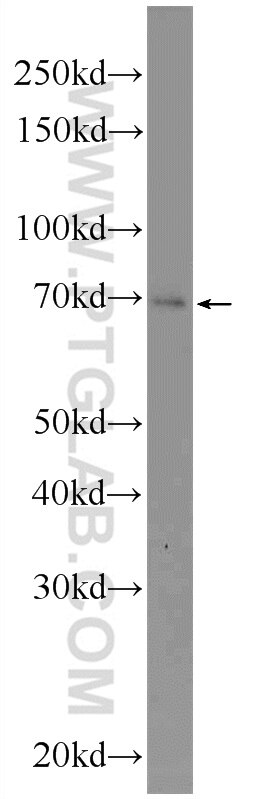Tested Applications
| Positive WB detected in | HepG2 cells, SMMC-7721 cells |
Recommended dilution
| Application | Dilution |
|---|---|
| Western Blot (WB) | WB : 1:200-1:1000 |
| It is recommended that this reagent should be titrated in each testing system to obtain optimal results. | |
| Sample-dependent, Check data in validation data gallery. | |
Product Information
25152-1-AP targets ZNF253 in WB, ELISA applications and shows reactivity with human samples.
| Tested Reactivity | human |
| Host / Isotype | Rabbit / IgG |
| Class | Polyclonal |
| Type | Antibody |
| Immunogen | ZNF253 fusion protein Ag18570 Predict reactive species |
| Full Name | zinc finger protein 253 |
| Calculated Molecular Weight | 499 aa, 58 kDa |
| Observed Molecular Weight | 58-65 kDa |
| GenBank Accession Number | BC125063 |
| Gene Symbol | ZNF253 |
| Gene ID (NCBI) | 56242 |
| RRID | AB_2879927 |
| Conjugate | Unconjugated |
| Form | Liquid |
| Purification Method | Antigen affinity purification |
| UNIPROT ID | O75346 |
| Storage Buffer | PBS with 0.02% sodium azide and 50% glycerol , pH 7.3 |
| Storage Conditions | Store at -20°C. Stable for one year after shipment. Aliquoting is unnecessary for -20oC storage. 20ul sizes contain 0.1% BSA. |
Background Information
ZNF253, also named as Zinc finger protein 411 or BMZF1, is a 499 amino acid protein, which contains one KRAB domain and eleven C2H2-type zinc fingers. ZNF253 belongs to the krueppel C2H2-type zinc-finger protein family and is expressed in bone marrow and in monocytic and immature erythroid cell lines. ZNF253 may function as a transcription factor.
Protocols
| Product Specific Protocols | |
|---|---|
| WB protocol for ZNF253 antibody 25152-1-AP | Download protocol |
| Standard Protocols | |
|---|---|
| Click here to view our Standard Protocols |





